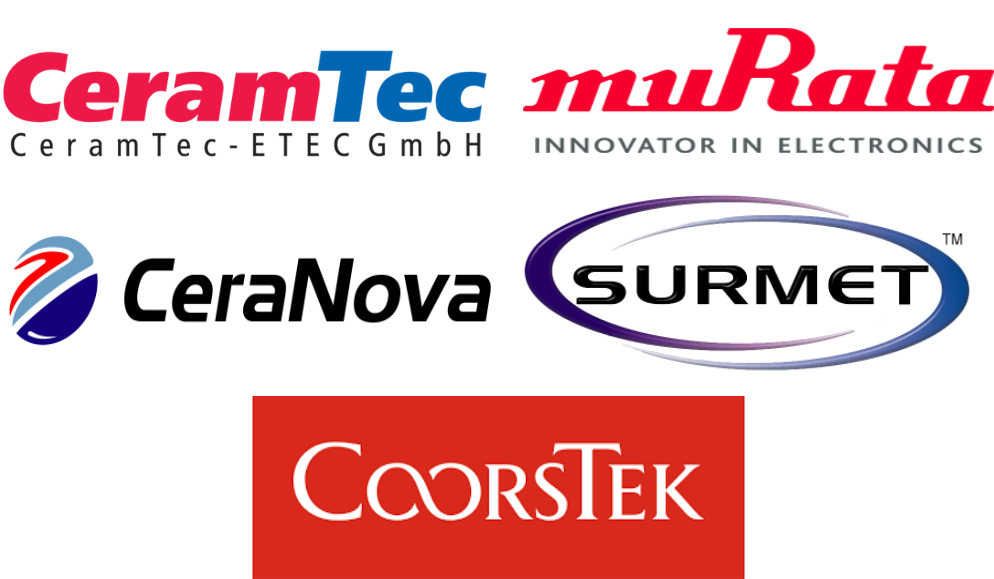Market Size of Optical Ceramics Industry

| Study Period | 2019 - 2029 |
| Base Year For Estimation | 2023 |
| CAGR | 15.00 % |
| Fastest Growing Market | Asia Pacific |
| Largest Market | North America |
| Market Concentration | Low |
Major Players
*Disclaimer: Major Players sorted in no particular order |
Optical Ceramics Market Analysis
The optical ceramics market is expected to register a CAGR of 15% over the forecast period (2021 - 2026). Optical ceramics offer high transmission over the Visible-MWIR wavelength range, excellent refractive index homogeneity, and outstanding environmental durability.
- The optical ceramics market growth is attributed to the increasing use of optical ceramics in the aerospace industry and in the defense and security industry. There is continuous research and development going in this field which has led to achieving better efficiencies.
- Technological advancements and innovations in the defense and security industry, such as body armours and helmets as well as vehicles and aircrafts have been some of the significantly encouraging factors for the market.
- Optical ceramics are relatively lightweight and have strong durability. These features attract many industries. Some companies have started offering optical ceramics with several customization features such as embedded conductive grids, specialty coatings, tight dimensional tolerance, etc. The biggest advantage of optical ceramics market is the possibility of reasonably priced and large-sized materials.
Optical Ceramics Industry Segmentation
Optical ceramics are advanced industrial materials that are developed for use in various optical applications. The advantage of optical ceramics is the possibility of production of reasonably priced and large-sized materials for large area detection. They derive their utility from their response to infrared, optical, and ultraviolet light. These ceramics are made of several types of materials. Each of this type is meant for a specific and a unique purpose.
| By Type | |
| Polycrystalline | |
| Monocrystalline |
| By End-user Industry | |
| Aerospace & Defense | |
| Energy | |
| Healthcare | |
| Consumer Goods | |
| Other End-user Industries |
| Geography | ||||||||
| ||||||||
| ||||||||
| ||||||||
| ||||||||
|
Optical Ceramics Market Size Summary
The optical ceramics market is poised for significant growth, driven by its increasing application in the aerospace and defense sectors. These materials are prized for their high transmission capabilities over a broad wavelength range, excellent refractive index homogeneity, and exceptional environmental durability. The aerospace industry, in particular, relies on optical ceramics for advanced optical domes, conformal optical windows, and transparent armor, with sapphire being the most commonly used material. The defense and security sectors also benefit from the lightweight and durable nature of optical ceramics, which are used in body armor, helmets, and various vehicles and aircraft. Continuous research and technological advancements in these industries are fostering innovations, such as customizable features and cost-effective manufacturing processes, further propelling market growth.
The Asia-Pacific region is expected to experience substantial growth in the optical ceramics market, fueled by increased defense spending and a robust electronics production base, particularly in China and India. The rising security threats in these countries are prompting higher national defense expenditures, positively impacting the market. Additionally, the Indian government's initiatives to boost defense production, including collaborations for manufacturing helicopters, are expected to drive demand for optical ceramics. The market is characterized by fragmentation, with numerous manufacturers striving to maintain a competitive edge through innovation. Companies like CeraNova and Murata are expanding their production capacities to meet the growing demand, thereby enhancing their market positions.
Optical Ceramics Market Size - Table of Contents
-
1. MARKET DYNAMICS
-
1.1 Market Overview
-
1.2 Introduction to Market Drivers and Restraints
-
1.3 Market Drivers
-
1.3.1 Substitute to Glass, Metals, and Plastics
-
1.3.2 Increasing Defense Expenditure on Advanced Materials and Technologies
-
-
1.4 Market Restraints
-
1.4.1 High Cost of Optical Ceramics
-
-
1.5 Industry Value Chain Analysis
-
1.6 Industry Attractiveness - Porter's Five Force Analysis
-
1.6.1 Threat of New Entrants
-
1.6.2 Bargaining Power of Buyers/Consumers
-
1.6.3 Bargaining Power of Suppliers
-
1.6.4 Threat of Substitute Products
-
1.6.5 Intensity of Competitive Rivalry
-
-
-
2. MARKET SEGMENTATION
-
2.1 By Type
-
2.1.1 Polycrystalline
-
2.1.2 Monocrystalline
-
-
2.2 By End-user Industry
-
2.2.1 Aerospace & Defense
-
2.2.2 Energy
-
2.2.3 Healthcare
-
2.2.4 Consumer Goods
-
2.2.5 Other End-user Industries
-
-
2.3 Geography
-
2.3.1 North America
-
2.3.1.1 United States
-
2.3.1.2 Canada
-
-
2.3.2 Europe
-
2.3.2.1 Germany
-
2.3.2.2 France
-
2.3.2.3 United Kingdom
-
2.3.2.4 Spain
-
2.3.2.5 Italy
-
2.3.2.6 Rest of Europe
-
-
2.3.3 Asia-Pacific
-
2.3.3.1 China
-
2.3.3.2 Japan
-
2.3.3.3 South Korea
-
2.3.3.4 India
-
2.3.3.5 Japan
-
2.3.3.6 Rest of Asia-Pacific
-
-
2.3.4 Latin America
-
2.3.4.1 Brazil
-
2.3.4.2 Argentina
-
2.3.4.3 Rest of Latin America
-
-
2.3.5 Middle-East & Africa
-
2.3.5.1 Saudi Arabia
-
2.3.5.2 South Africa
-
2.3.5.3 Rest of Middle-East & Africa
-
-
-
Optical Ceramics Market Size FAQs
What is the current Optical Ceramics Market size?
The Optical Ceramics Market is projected to register a CAGR of 15% during the forecast period (2024-2029)
Who are the key players in Optical Ceramics Market?
CeraNova Corporation, Ceramtec GmbH, Surmet Corporation, CoorsTek Corporation and Murata Manufacturing Co. Ltd. are the major companies operating in the Optical Ceramics Market.

